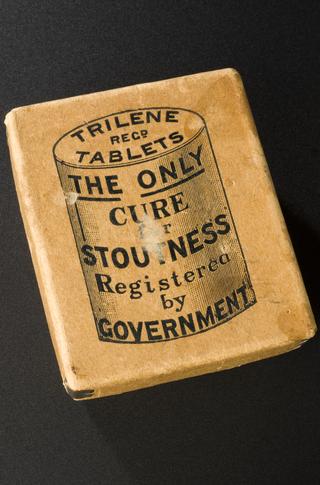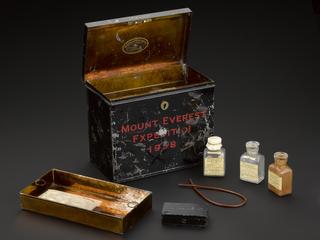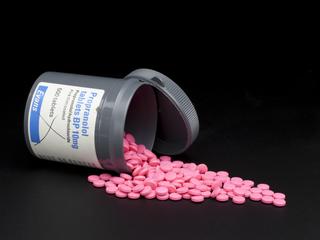








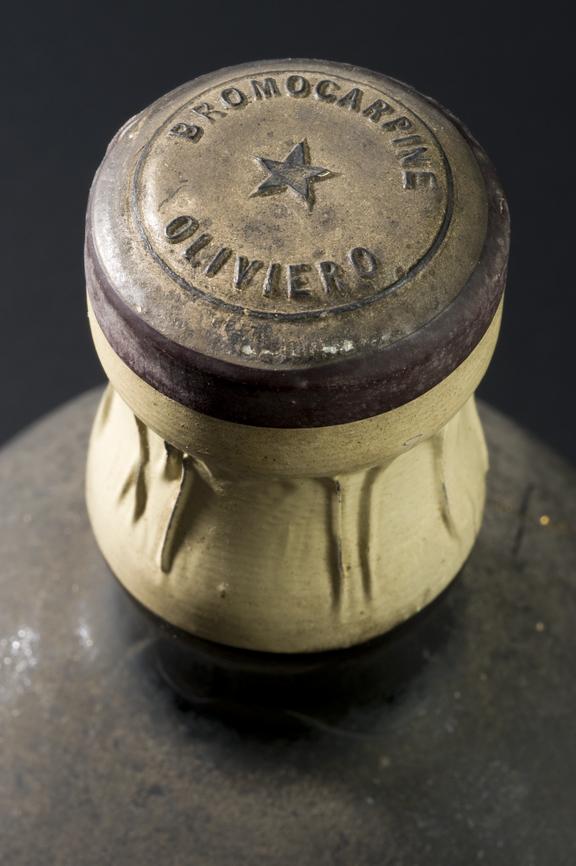






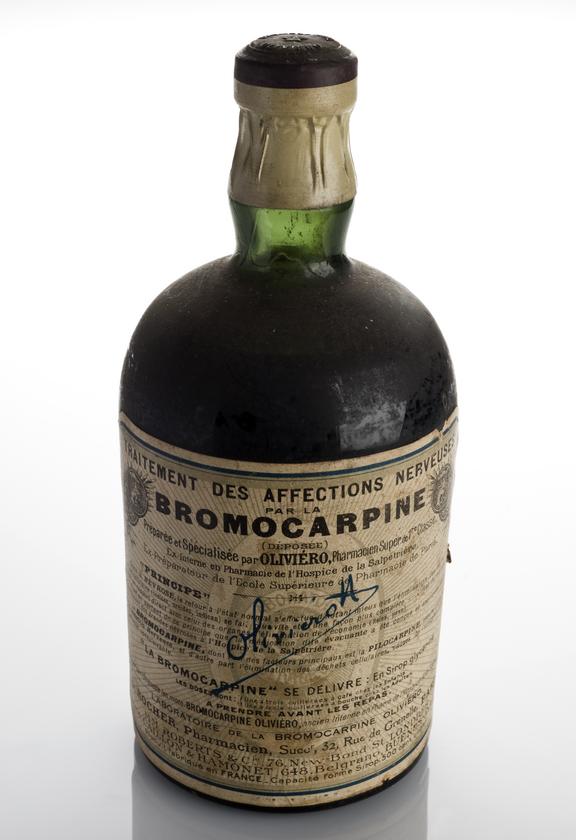
Glass bottle, containing bromocarpine nerve tonic, made by G. Rocher, Succ' 32 rue de Grenelle, Paris, France, 1870-1930. Supplied in England by Roberts and Co., London.
Mmmmmm, bromocarpine nerve tonic. Would you drink it? What if you had no other choice? When treating disorders such as nervous breakdown and neurasthenia, Victorian doctors called on a range of remedies. These might include electro-therapy, hypnosis, the ‘rest cure’, even holidays and ocean voyages. Unfortunately, all of these were too expensive or time-consuming for working-class people to afford. How you were treated usually depended on how much money you had. For many, the only other options available were asylums or nerve tonics like this one. The trouble with nerve tonics was that—much like asylums—no one was quite sure whether what was inside would cure you or make you sicker.
The makers of bromocarpine claimed it could quiet the nervous system, especially if taken for several months, and even cure epilepsy. In May 1912, the British Medical Journal tested a bottle of this medicine in order to see exactly what it contained. They found that it was mainly sugar water, flavoured with a little alcohol and orange extract. But it also contained 8.9% potassium bromide. Bromides were drugs commonly used in asylums of the time to calm patients, but they could cause depression and disorientation if taken regularly for long periods. It also may have contained a trace amount of Pilocarpine, a drug which has a variety of effects on the nervous system, including boosting the production of both saliva and sweat. Such effects helped assure patients that the tonic was doing something….even if no one quite knew exactly what.
Details
- Category:
- Materia Medica & Pharmacology
- Collection:
- Sir Henry Wellcome's Museum Collection
- Object Number:
- A675183
- Measurements:
-
overall: 190 mm 80 mm, 1.14kg
- type:
- medicinal tonic
